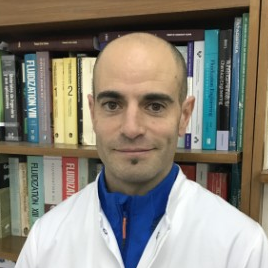Hydrogen Production via Steam Reforming from Biomass and Waste Derivates
A special issue of Catalysts (ISSN 2073-4344).
Deadline for manuscript submissions: closed (30 September 2019) | Viewed by 8860
Special Issue Editors
Interests: pyrolysis; gasification; spouted bed; biomass; waste management
Special Issues, Collections and Topics in MDPI journals
Special Issue Information
Dear Colleagues,
The demand for hydrogen in key sectors, such as ammonia production, oil refining and methanol production, is expected to grow over the coming decades. Moreover, 96% of the global hydrogen produced is of fossil origin, i.e., the main sources are the reforming of natural gas and oil fractions, and coal gasification. The processes for producing hydrogen from biomass and waste are therefore attracting increasingly more attention, with thermochemical routes being those with the best perspectives for their full-scale development. The catalytic steam reforming of biomass and waste-derived products provides an opportunity for producing hydrogen from renewable and sustainable sources. Two types of processes may be considered as direct and indirect routes. On the one hand, direct routes pursue the conversion of biomass and waste into hydrogen in an integrated process, with pyrolysis and in-line reforming being the ones most representative of this strategy. On the other hand, in the indirect approach, an intermediate product (bio-oil) is produced and transported to centralized units for its reforming. Despite the research conducted on these processes in recent years, the studies published are clearly of a preliminary nature, and further research is required for their scaling-up. It should be noted that key aspects of the catalytic reforming step remain unclear, such as the optimization of the reforming catalysts, knowledge of catalyst deactivation, and reactor design and modeling.
Dr. Gartzen Lopez
Dr. Maite Artetxe
Guest Editors
Manuscript Submission Information
Manuscripts should be submitted online at www.mdpi.com by registering and logging in to this website. Once you are registered, click here to go to the submission form. Manuscripts can be submitted until the deadline. All submissions that pass pre-check are peer-reviewed. Accepted papers will be published continuously in the journal (as soon as accepted) and will be listed together on the special issue website. Research articles, review articles as well as short communications are invited. For planned papers, a title and short abstract (about 250 words) can be sent to the Editorial Office for assessment.
Submitted manuscripts should not have been published previously, nor be under consideration for publication elsewhere (except conference proceedings papers). All manuscripts are thoroughly refereed through a single-blind peer-review process. A guide for authors and other relevant information for submission of manuscripts is available on the Instructions for Authors page. Catalysts is an international peer-reviewed open access monthly journal published by MDPI.
Please visit the Instructions for Authors page before submitting a manuscript. The Article Processing Charge (APC) for publication in this open access journal is 2200 CHF (Swiss Francs). Submitted papers should be well formatted and use good English. Authors may use MDPI's English editing service prior to publication or during author revisions.
Keywords
- steam reforming
- catalyst
- biomass
- waste plastics
- bio-oil reforming
- hydrogen
- pyrolysis-reforming
- deactivation
Benefits of Publishing in a Special Issue
- Ease of navigation: Grouping papers by topic helps scholars navigate broad scope journals more efficiently.
- Greater discoverability: Special Issues support the reach and impact of scientific research. Articles in Special Issues are more discoverable and cited more frequently.
- Expansion of research network: Special Issues facilitate connections among authors, fostering scientific collaborations.
- External promotion: Articles in Special Issues are often promoted through the journal's social media, increasing their visibility.
- Reprint: MDPI Books provides the opportunity to republish successful Special Issues in book format, both online and in print.
Further information on MDPI's Special Issue policies can be found here.






